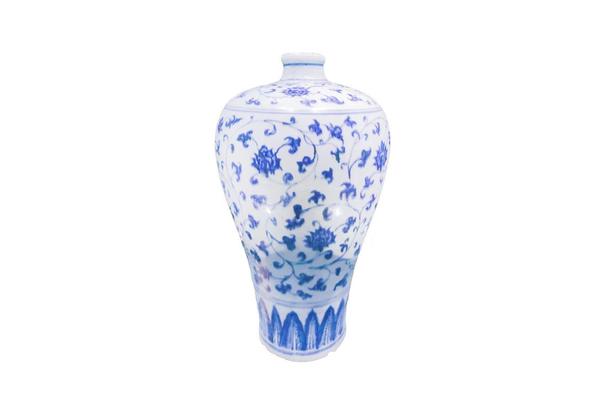Visit Henan, Explore China Episode VI: Exquisite Blue-and-White Porcelain, a Shining Pearl of Chinese Civilization
Editor's note: In a letter replying to senior experts at the National Museum of China on July 8, 2022, President Xi Jinping, also general secretary of the Communist Party of China Central Committee and chairman of the Central Military Commission, stressed firming up cultural confidence, preserving the fine accomplishments of Chinese civilization and using cultural relics to promote exchanges and mutual learning between civilizations. Henan, with the largest number of ancient kiln sites, has produced the most complete range of ceramic products in China. Generally speaking, the Henan-centered Chinese ceramic culture could be considered as one of the important cultural heritages nurtured by the Yellow River culture. Starting on August 2, we are launching the "Visit Henan, Explore China" series, featuring 6 short videos to help you catch a glimpse of wonderful Henan and brilliant Chinese civilization. Here is the last episode: Exquisite Blue-and-White Porcelain, a Shining Pearl of Chinese Civilization.
编者按:2022年7月8日,习近平总书记在给中国国家博物馆老专家的回信中强调,推动文物活化利用,推进文明交流互鉴,守护好、传承好、展示好中华文明优秀成果。作为文物大省的河南,不仅是中国品种最全的陶瓷产区,而且还是拥有古陶瓷窑址数量最多的省份,可以说以河南为中心的中国陶瓷文化是黄河文化孕育出的重要文化遗产之一。2022年8月2日起,大河网推出6期双语特别报道——“在河南,遇见China”。让我们一起,通过陶瓷文化,“豫”见中华文明。今日推出最后一期:《人间最美是“青花”》。
Click on the video
NB: This is not a word-for-word transcript
In last episode, we appreciated the charm of Ru wares. Today, let's go and have a look at a new type of porcelain, which enjoys a reputation of the "Treasure of the World".
在上一期报道中,我们一起欣赏了汝瓷的文化魅力。今天,我们要介绍的瓷器是有着“人间瑰宝”之称的青花瓷。

A screenshot from the video above
Since the Yuan (1271-1368) and Ming (1368-1644) dynasties, blue-and-white porcelain has gradually become the mainstream in China. Where did the blue-and-white porcelain rise? The blue-and-white porcelain fragments of the Tang Dynasty (618-907) unearthed at Gongyi kilns in Henan province are archaeological proof that Gongyi is the birthplace of Tang blue-and-white porcelain.
元、明以后青花瓷逐渐成为中国瓷器的主流。青花瓷器的源头在哪里?经过考古发掘,在河南巩义窑发掘出土了唐代青花瓷片,证实了巩义为“唐青花”的起源地。
Blue-and-white porcelain wares in ancient China are featured by delicate and pretty decorations, with various kinds of signatures inscribed on the bottom reflecting the distinctive features of different periods. The mature blue-and-white porcelain wares after the Yuan Dynasty, developing from the blue-and-white porcelain of the Tang, were produced in Gongyi, mainly for exports.
中国古代青花瓷,绘画装饰清秀素雅,瓷器底部的文字和图案款识种类繁多,各个时期的款识均有鲜明的时代特征。元代以后成熟发展的青花瓷其前身为唐代青花瓷,产地在河南巩义,主要用于外销。

A blue-and-white porcelain vase with lotus patterns produced in the Ming Dynasty. [Photo/dahe.cn]
The picture above shows us a blue-and-white porcelain vase with lotus patterns produced in the Ming Dynasty, featured by a narrow and straight mouth, a slender neck and a broad shoulder. The vase, covered in bluish white glaze, is decorated with lotus patterns on its shoulder and body while banana-leaf patterns on the foot, exquisite and elegant.
上图是一件烧制于明朝时期的青花缠枝莲花梅瓶,小直口、束颈、丰肩。瓶通体施白釉,略泛青色,肩腹部饰青花缠枝莲花纹,足饰蕉叶纹,纹饰疏密有致,釉色淡雅宜人。
Gongyi-made blue-and-white porcelain wares have been discovered in many places. In October 2006, Zhengzhou Research Institute of Cultural Relics and Archaeology discovered 2 tower-shaped blue-and-white porcelain pots from a tomb of the Tang Dynasty in Shangjie district of Zhengzhou city, with patterns describing a man playing Tang-style hockey, which is believed to be the earliest hockey in the world.
巩义窑生产的青花瓷在不少地方有发现。2006年10月,郑州市文物考古研究院在上街唐墓中发现了两件唐青花塔式罐,罐身绘有唐代步打球的青花图案,有人称之为最早的曲棍球。

A blue-and-white porcelain plate produced in the Ming Dynasty. [Photo/dahe.cn]
This tomb is 15 kilometers west of the site of Huangye kiln (mainly producing Sancai or tri-colored glazed porcelain) in Gongyi. The pots unearthed from the tomb shocked the archaeological circle, because although many blue-and-white porcelain fragments of the Tang Dynasty had been unearthed before, the complete and large ones are still rare now. The discovery of the 2 tower-shaped blue-and-white porcelain pots and a large number of fragments unearthed at Huangye kiln site show that Gongyi kiln is not only the birthplace of tri-colored glazed porcelain of the Tang Dynasty, but also the origin of blue-and-white porcelain.
唐墓西距巩义黄冶唐三彩遗址15公里。青花罐的出土震惊了考古界,因为此前虽有“唐青花”残片出土,但少见完整且体型较大的唐青花瓷器。青花塔罐的出世以及黄冶窑址中发掘出多量的青花残片,表明巩义窑不仅系唐三彩首创地,亦是青花瓷烧制工艺的发源地。

策划:王曦辉 张培君
文案:赵汉青
出镜:杨佳欣
制作:何蒙贺
审校:李文竞
Related Stories
相关阅读
Visit Henan, Explore China Episode II: Primitive Porcelain, Not Primitive at All
Visit Henan, Explore China Episode III: China's Earliest White Porcelain Unearthed in Henan
Visit Henan, Explore China Episode IV: Sancai, a Mirror of Tang Dynasty
Visit Henan, Explore China Episode V: A 1,000-Year-Old Ru Porcelain Vase Still Wows the World Today
